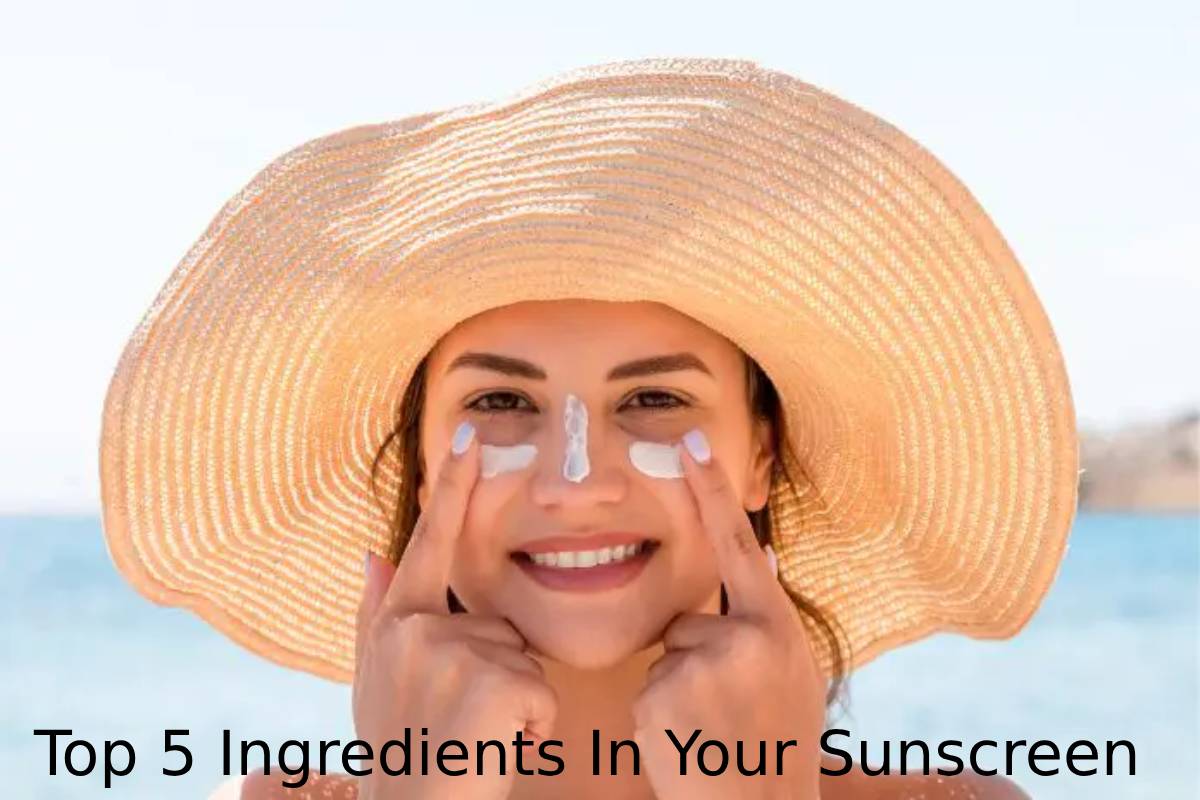Sunscreen is without a doubt an essential part of our day-to-day life. We already know the basics of it. But the top 5 ingredients in your sunscreen protect and keep your skin healthy. Sunscreen keeps the harmful UV rays at bay. It protects our skin from premature aging and keeps it healthy. Choosing a sunscreen that suits your skin is not easy peasy.
As essential as applying sunscreen is it’s already important to know and understand the ingredients present in it. The effectiveness of sunscreen for protection largely depends on its ingredients. Let’s look at the top 5 best ingredients in a sunscreen and explore more about its role against sun damage promoting the health of the skin.
Table of Contents
Top 5 Ingredients In Your Sunscreen
Sunscreen lowers your risk of getting skin cancer, premature aging, and sunburn. The ingredients are filled with active physical ingredients like Zinc Oxide and Titanium dioxide and chemical filters like Oxybenzone, Avobenzone, and Tinosorb S and M.
1. Titanium Dioxide (Physical Sunscreen)
Titanium Dioxide is found in physical sunscreen. This forms a thin barrier on the skin’s surface and works wonders. Physical sunscreens like Titanium Oxide are both safe for skin and marine life. This ingredient is suitable for sensitive skin and doesn’t mostly irritate. If you have concerns about chemical absorption, then this physical sunscreen is the best pick for you.
One can even use this sunscreen for kids older than 6 months. This ingredient is considered safe and better compared to chemical sunscreens. Titanium Oxide is best for sun damage protection. Make sure to not use it as powder or spray because the nanoparticles can be dangerous for the health of humans. The ingredient is effective for both UVA and UVB rays. In addition, it reduces the white cast and gives a smoother finish to the skin.
2. Zinc Oxide (Physical Sunscreen)
Just like Titanium Dioxide, Zinc Oxide is found in physical sunscreens. The ingredient has multifunctional properties and acts as an excellent addition to sunscreens. In addition to protecting the skin, the physical sunscreen includes anti-inflammatory properties and antimicrobial properties. It’s ideal for acne-prone skin too. It calms the skin with its anti-inflammatory properties.
Zinc Oxide doesn’t contain any sort of synthetic colorants and is a natural ingredient. Zinc Oxide suppliers create this material with a very specific set of customers in mind, like brands in the personal care industry. You can apply this physical sunscreen even during swimming because it doesn’t wash out in the water and harm marine life. This skin-friendly ingredient is even used in sunburn relief creams.

3. Oxybenzone (Chemical Sunscreen)
Oxybenzone is found in chemical sunscreens. This is one of the most common chemical filters used in sunscreen. The ingredient acts as a UV filter and helps in preventing sunburn and skin damage. Oxybenzone also absorbs UVB rays and short UVA rays. With all the benefits there’s a a setback.
For environmental benefits sunscreen is not preferred. This is because it causes harm to marine life like coral reefs. Research revealed that sunscreen ingredients like Oxybenzo are absorbed in the skin and this might sound not-so-safe. However, the study further revealed that one can still use it because there are no potential harms.
4. Avobenzone (Chemical Sunscreen)
Found in chemical sunscreen, Avobenzone is an effective sunscreen to keep UVA rays at bay. It provides a broad-spectrum protection to the skin. The ingredients should be combined with other sunscreen agents to be effective. The drawback is the ingredient degrades while exposed to sunlight. Therefore, there should be stabilizers to make it effective and safe. The ingredient often has fewer skin irritations compared to other chemical ingredients.
5. Tinosorb S and M (Chemical Sunscreen)
Last but not least, Tinosorb S and M provides comprehensive coverage and makes it more protective against skin damage. The ingredient protects against both UVB and UVA rays either long or short. In addition, the ingredient also stabilizes other filters making it much safer.
Conclusion
These top 5 ingredients in sunscreen are known for their effectiveness. These filters are added to boost effectiveness and protect the skin from harmful radiation. Before selecting a sunscreen, always go with the one that suits your skin. For swimming, one can always prefer mineral/physical sunscreen to keep marine life protected. Do a patch test before applying your preferred sunscreen.
Physical sunscreens are effective immediately after application. Chemical sunscreens take a little bit of time around 15-20 minutes. Keep reapplying your sunscreen for protection after every 2 hours. The active ingredients take time to kick in and work therefore before stepping out of the house, apply it 20-30 minutes prior. Which sunscreen has been effective for you? Let us know in the comment box!
FAQs
1. Which Is The Best Sunscreen Ingredient For Oily Skin?
Minerals or Physical sunscreens like Titanium Dioxide and Zinc Oxide are found to be better for oily skin.
2. Which Sunscreen Ingredients To Avoid?
There is more research going on about the safety of certain sunscreen ingredients like Cinoxate, Homosalate, Padimate O, and benzene.
3. Are Top 5 Ingredients In Your Sunscreen Zinc Oxide Safe?
Yes! Zinc Oxide is considered safer and more effective compared to other chemical filters.

